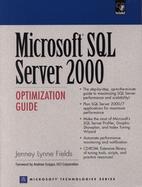Microsoft SQL Server 2000 Optimization Guide
- List Price: $49.99
- Binding: Paperback
- Edition: 1
- Publisher: Prentice Hall PTR
- Publish date: 11/20/2000
Description:
Foreword. Preface.I.OVERVIEW AND ARCHITECTURE. 1.Overview of SQL Server 2000.Enhancements to SQL Server 2000.Large Memory Support. Internet Support. SQL Server V7.X Enhancements. Performance Analysis Tools. Resource Consumers. Key Considerations for Tuning SQL Server. Why Are Tuning and Optimization Necessary? Summary.2.The Storage Engine.Introduction to the Storage Engine. Storage Engine Features. Subsystem Overview. Implementation Considerations. Data Organization. Storage Layout. Database Files. System Databases. Creating, Altering and Dropping Databases. Filegroups. Maintaining Data and Log Files. Table Organization. Data Types. Indexes. Managing the Transaction Log. Database Locking Mechanisms. Memory Utilization. Processor Utilization. Summary.3.Query Processor.Introduction to the Query Processor. Query Execution. Query Optimization. Types of Query Optimizers. Statistics and the Query Optimizer. Improvements to the SQL Server Query Processor. Internet Support. Partitioning Views-Federated SQL Server 2000 Servers. Efficiency of Data Transfer. Query Governor. Query Optimization Techniques. Join Techniques. Hints. Indexing Strategies. Parallel Execution of Queries. Stored Procedures. Multiphase. Automatic Parameters. Transitive Predicates. Star Queries. Optimization for Data Modifications. Tools for Working with Queries. Summary.II.PERFORMANCE CONSIDERATIONS. 4.Hardware Considerations.Introduction. General Hardware Bottleneck Considerations. Disk Configurations. RAID or Not to RAID. Understanding RAID Levels. Hardware RAID vs Software RAID. Disk and Controller Considerations. Understanding Disk I/O. Transfer Rates. Disk Transfer Rates. Calculating Throughput. Determine Capacity of Controllers. PCI Bus Bandwidth. Tape Devices. Summarizing Disk I/O Subsystem Requirements. Suggestions for Improving Disk I/O. The More Hardware the Better. Read-Ahead Manager. Separate Activities. Disk Considerations for SQL Server and Windows NT/2000.Memory Considerations. Processor Considerations. Network Considerations. Summary.5.Implementing High Availability Solutions.Introduction to High Availability Solutions. Introduction to Clustering. Microsoft Cluster Server Implementation. Clustering Configurations. How Failover Works. SQL Server on Microsoft Cluster Server. Resource Issues Running SQL Server in a Cluster. Multiple Instances of SQL Server. Federated SQL Server 2000 Servers. Backup and Restore Capabilities. Log Shipping. Stand-By Server. SQL Server Replication. Summary.6.Application Considerations.Application Design Considerations. Normalization. Introduction to Indexes. Index Components. Clustered Indexes. Tables without Clustered Indexes. Clustered Index Example. Nonclustered Indexes. Example of a Nonclustered Index when a Clustered Index Exists. Example of a Nonclustered Index when a Clustered Index Has Been Dropped. Indexing Options. Creating Indexes. Optimizing Index Creation. Composite Indexes. Covering Indexes. Indexing Views. Index Selection. Understanding Index Selectivity and Density. Indexing Factors Affecting Query Performance. Tools for Managing Indexes. DBCC for Managing Tables, Indexes and Statistics. Summary.III.DIAGNOSING AND RESOLVING PROBLEMS-TUNING AND OPTIMIZATION. 7.Performance Tuning with Windows NT/2000 Tools.Monitoring Objectives. Create a Baseline. Windows NT/2000 Performance Monitor. Introduction to Performance Monitor. Performance Monitor Options. Monitor Each Key Area. Understanding CPU Utilization. Understanding Disk Utilization. Understanding Page Faulting-The Memory Object. Windows NT/2000 Objects-Process. Windows NT/2000 Objects-Thread. Windows NT/2000 Objects-Network. SQL Server Objects. SQL Server Default Performance Monitor Workspace File. SQL Serve
Expand description

Please Wait

